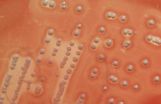(Press-News.org) ST. PAUL, Minn. – Requiring a second exam on a person who is considered brain dead may be unnecessary, according to a study on the impact of a second brain death exam on organ donation rates. The research is published in the December 15, 2010, online issue of Neurology®, the medical journal of the American Academy of Neurology.
For the study, scientists reviewed the cases of 1,229 adults and 82 children ages one and older pronounced brain dead. The information was taken from the New York Organ Donor Network database during a 19-month period.
"One of the most disturbing findings of our study is the prolonged anguish imposed on grieving families in the intensive care unit waiting for the second brain death exam," said study author Dana Lustbader, MD, FCCM, FCCP, with The North Shore LIJ Health System in Manhasset, New York. "Not only is the opportunity for organ donation reduced, but families may endure unnecessary suffering while waiting an average of 19 hours for the second exam to be completed."
"Since organ viability decreases the longer a person is brain dead, our results show that conducting more than one brain death examination results in the loss of potentially life-saving organs," reports Lustbader. "A repeat exam adds an extra day of intensive care resulting in additional costs of about a million dollars per year in the New York region alone."
The study found that none of the people declared brain dead in the first exam were found to have restored brain stem function in the second exam.
Lustbader noted that 166 people, or 12 percent, sustained a cardiac arrest while awaiting a second exam or after the second exam, making them ineligible for organ donation.
The average time between the two exams in the study was 19 hours, three times longer than recommended by the New York State Health Department. As the time between exams increased, consent for organ donation decreased from 57 percent to 45 percent. In addition, refusal of organ donation increased from 23 percent to 36 percent as the time between exams increased.
In New York, the State Department of Health's 2005 brain death guidelines require a breathing test and two clinical brain death exams, carried out six hours apart. In 2010, the American Academy of Neurology updated its brain death guidelines, which now call for only one brain death examination.
"These findings illustrate why there's a crucial need to standardize approaches for determining brain death," said Gene Sung, MD, MPH, of the University of Southern California in Los Angeles and a member of the American Academy of Neurology, who wrote an editorial regarding the article that is published in Neurology.
###To read the American Academy of Neurology's updated guidelines on brain death, visit http://www.neurology.org/content/74/23/1911.full.pdf+html.
The American Academy of Neurology, an association of more than 22,000 neurologists and neuroscience professionals, is dedicated to promoting the highest quality patient-centered neurologic care. A neurologist is a doctor with specialized training in diagnosing, treating and managing disorders of the brain and nervous system such as epilepsy, dystonia, migraine, Huntington's disease, and dementia.
For more information about the American Academy of Neurology, visit http://www.aan.com.
VIDEO:
http://www.youtube.com/AANChannel
TEXT:
http://www.aan.com/press
TWEETS:
http://www.twitter.com/AANPublic
END
DURHAM, N.C. – About 90 percent of people are infected at some time in their lives with Epstein-Barr virus (EBV), usually with no ill effects. But individuals with compromised immune systems, such as people with organ transplants or HIV infection, have a greater risk of cancer occurring because of this virus.
Scientists at the Duke Cancer Institute have discovered a pathway that infected cells use to root out EBV infections, a finding that has implications for understanding the human response to cancer-causing viruses in general.
"Using cell culture studies, we have ...
Polar bears were added to the threatened species list nearly three years ago as their icy habitat showed steady, precipitous decline because of a warming climate. But it appears the Arctic icons aren't necessarily doomed after all.
Scientists from several institutions, including the U.S. Geological Survey and the University of Washington, have found that if humans reduce greenhouse gas emissions significantly in the next decade or two, enough Arctic ice is likely to remain intact during late summer and early autumn for polar bears to survive.
"What we projected in ...
Reykjavik, ICELAND, 15 December 2010 – Scientists from deCODE genetics and academic colleagues from Iceland, the UK, US, Netherlands, Spain and Romania today report the discovery of a set of single-letter variations in the sequence of the human genome (SNPs) that impact individual baseline levels of prostate specific antigen, or PSA. Testing for PSA levels is the most commonly used screening tool for the detection of prostate cancer. A prostate biopsy is routinely recommended for men with PSA above a certain threshold. However, PSA levels can rise for reasons unrelated ...
America is winning a battle against heart disease and stroke mortality, but is still losing the war, according to the American Heart Association.
In Heart Disease and Stroke Statistics – 2011, published online in Circulation: Journal of the American Heart Association, the association reports that the death rate from heart diseases declined 27.8 percent from 1997 to 2007 (the most recent final data available), and the stroke death rate fell 44.8 percent.
However, during the same period, the total number of inpatient cardiovascular operations and procedures increased ...
Body fat distribution does not play an important role in the incidence of every subtype of premenopausal breast cancer, but is associated with an increased risk for estrogen receptor (ER)–negative breast cancer, according to a study published December 15 in The Journal of the National Cancer Institute.
Previous studies have shown that the association between body mass index (BMI) and the risk of breast cancer varies with menopausal status: a higher BMI is positively associated with risk of postmenopausal breast cancer but inversely associated with risk of premenopausal ...
"Staph" bacteria feed on blood. They need the iron that's hidden away inside red blood cells to grow and cause infections. It turns out that these microbial vampires prefer the taste of human blood, Vanderbilt University scientists have discovered.
The researchers report in the Dec. 16 issue of Cell Host & Microbe that Staphylococcus aureus (staph) favors human hemoglobin – the oxygen-carrying protein that contains iron – over hemoglobin from other animals. The findings help explain why staph preferentially infects people and suggest that genetic variations in hemoglobin ...
STANFORD, Calif. — More than 2,000 genetic regions involved in early human development have been identified by researchers at the Stanford University School of Medicine. The regions, called enhancers, are responsible for triggering the expression of distant genes when embryonic stem cells begin to divide to form the many tissues of a growing embryo.
"This is going to be an enormous resource for researchers interested in tracking cells involved in early human development," said Joanna Wysocka, PhD, assistant professor of developmental biology and of chemical and systems ...
LA JOLLA, CA-In addition to fast food, desk jobs, and inertia, there is one more thing to blame for unwanted pounds-our genome, which has apparently not caught up with the fact that we no longer live in the Stone Age.
That is one conclusion drawn by researchers at the Salk Institute for Biological Studies, who recently showed that mice lacking a gene regulating energy balance are protected from weight gain, even on a high fat diet. These findings have implications for the worldwide obesity epidemic and its consequences, such as type two diabetes.
In the December 16, ...
The software tool presents data visually and this allows those without specialist training – both professionals and older people – to better understand and contribute to discussions about the mechanics of movement, known as biomechanics, when carrying out everyday activities.
The software takes motion capture data and muscle strength measurements from older people undertaking everyday activities. The software then generates a 3D animated human stick figure on which the biomechanical demands of the activities are represented visually at the joints. These demands, or stresses, ...
A newly published insight into the biology of many kinds of less-aggressive but still lethal brain tumors, or gliomas, opens up a wide array of possibilities for new therapies, according to scientists at Brown University and the University of California, San Francisco (UCSF). In paper published online Dec. 15 in the Journal of the National Cancer Institute, they describe how a genetic mutation leads to an abnormal metabolic process in the tumors that could be targeted by drug makers.
"What this tells you is that there are some forms of tumors with a fundamentally altered ...

